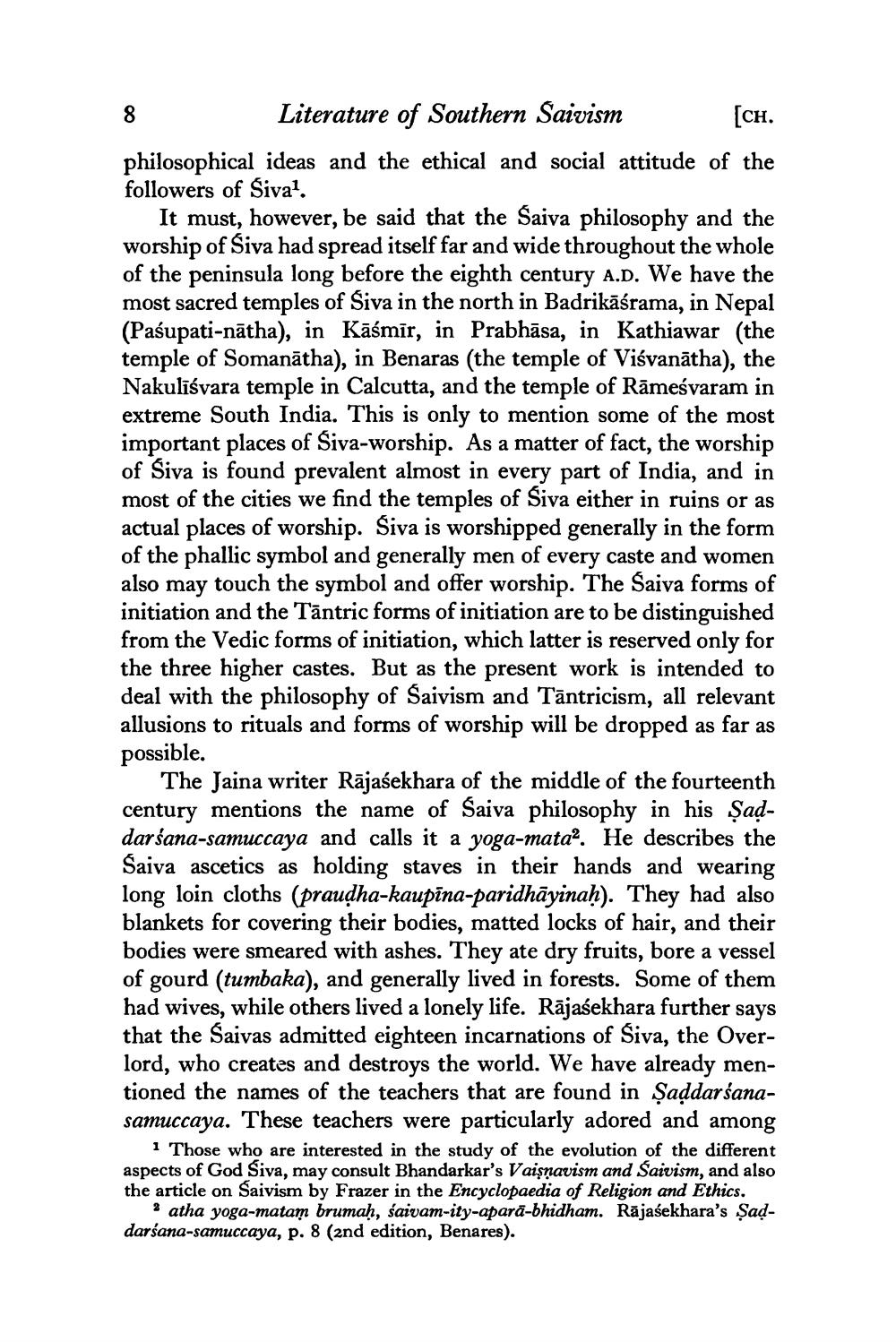________________
Literature of Southern Saivism [cH. philosophical ideas and the ethical and social attitude of the followers of Siva.
It must, however, be said that the Saiva philosophy and the worship of Siva had spread itself far and wide throughout the whole of the peninsula long before the eighth century A.D. We have the most sacred temples of Siva in the north in Badrikāśrama, in Nepal (Pasupati-nātha), in Kāśmīr, in Prabhāsa, in Kathiawar (the temple of Somanātha), in Benaras (the temple of Viśvanātha), the Nakulīśvara temple in Calcutta, and the temple of Rāmeśvaram in extreme South India. This is only to mention some of the most important places of Siva-worship. As a matter of fact, the worship of Siva is found prevalent almost in every part of India, and in most of the cities we find the temples of Siva either in ruins or as actual places of worship. Siva is worshipped generally in the form of the phallic symbol and generally men of every caste and women also may touch the symbol and offer worship. The Saiva forms of initiation and the Tāntric forms of initiation are to be distinguished from the Vedic forms of initiation, which latter is reserved only for the three higher castes. But as the present work is intended to deal with the philosophy of Saivism and Tāntricism, all relevant allusions to rituals and forms of worship will be dropped as far as possible.
The Jaina writer Rājasekhara of the middle of the fourteenth century mentions the name of Saiva philosophy in his Şaddarśana-samuccaya and calls it a yoga-mata. He describes the Saiva ascetics as holding staves in their hands and wearing long loin cloths (praudha-kaupīna-paridhāyinaḥ). They had also blankets for covering their bodies, matted locks of hair, and their bodies were smeared with ashes. They ate dry fruits, bore a vessel of gourd (tumbaka), and generally lived in forests. Some of them had wives, while others lived a lonely life. Rājasekhara further says that the Saivas admitted eighteen incarnations of Siva, the Overlord, who creates and destroys the world. We have already mentioned the names of the teachers that are found in Șaļdarśanasamuccaya. These teachers were particularly adored and among
1 Those who are interested in the study of the evolution of the different aspects of God Siva, may consult Bhandarkar's Vaişnavism and Saivism, and also the article on Saivism by Frazer in the Encyclopaedia of Religion and Ethics.
* atha yoga-matam brumah, saivam-ity-aparā-bhidham. Rājasekhara's Şaddarśana-samuccaya, p. 8 (2nd edition, Benares).




